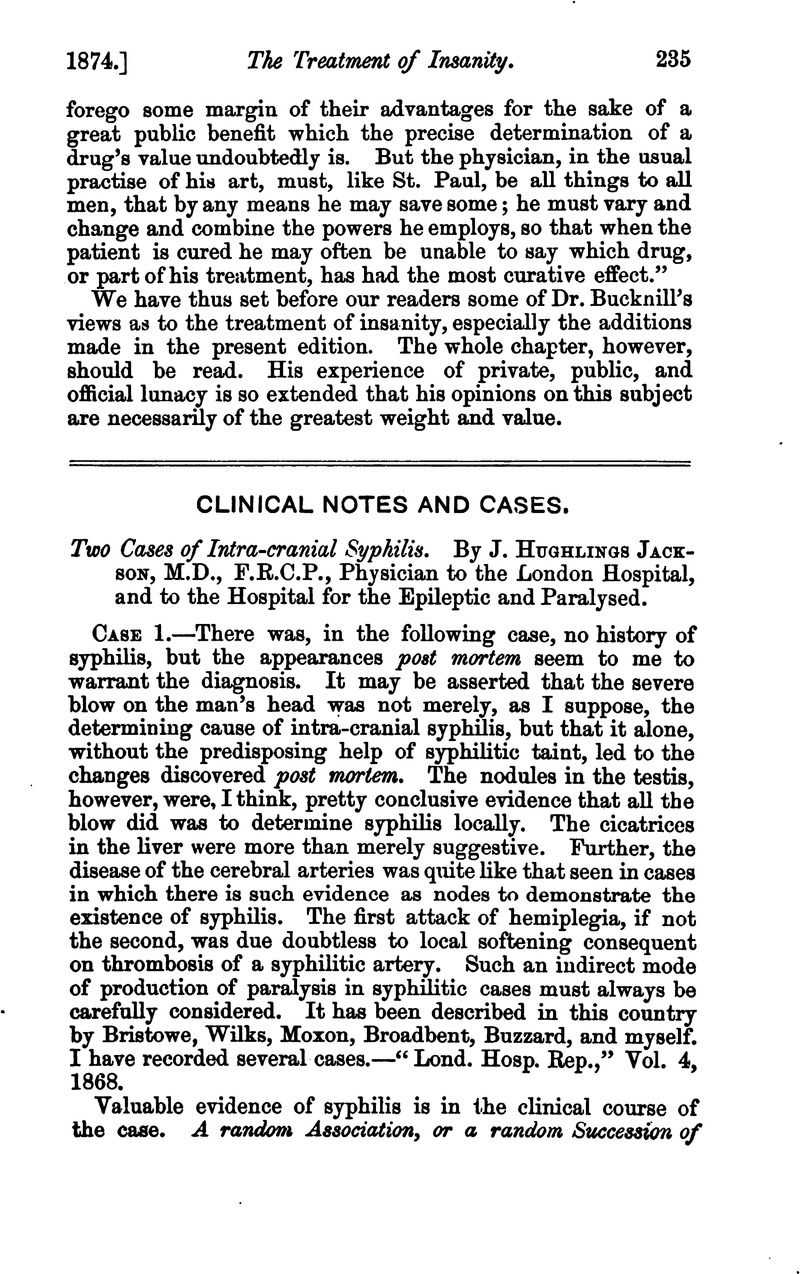Article contents
Two Cases of Intra-cranial Syphilis
Published online by Cambridge University Press: 19 February 2018
Abstract

- Type
- Part I.—Original Articles
- Information
- Copyright
- Copyright © Royal College of Psychiatrists, 1874
References
∗ It is not uncommon for paralysis to follow convulsions; as I believe the paralysis is produced by the discharge in the convulsion. I use the expression “result of a convulsion” in the text. The after effects of strong epileptic discharges deserve careful consideration. I believe that in epileptic mania, and in so-called “masked” epilepsy, the highest nervous processes are put hors de combat by a strong nervous discharge, just as the corpus striatum is in epileptic hemiplegia. On this view the raving in epileptic mania is not owing to the epileptic discharge; it begins when that discharge is over, and results from uncontrolled action of processes more automatic than those temporarily paralysed by the discharge.>>Google Scholar
∗ I am glad to find that Dr. Buzzard agree with me in thinking that this association (of optic neuritis with one-sided convulsion) is “an important diagnostic feature.” See his lately published work on “Syphilitic Affections of the Nervous System.”>>Google Scholar
∗ I have recorded a striking case of this kind “Med. Times and Gazette,” March 29, 1873. The patient was cured four or five times.>>Google Scholar
- 1
- Cited by



eLetters
No eLetters have been published for this article.